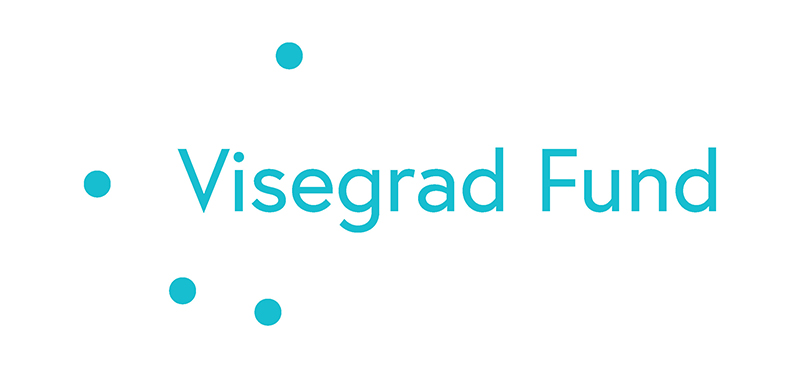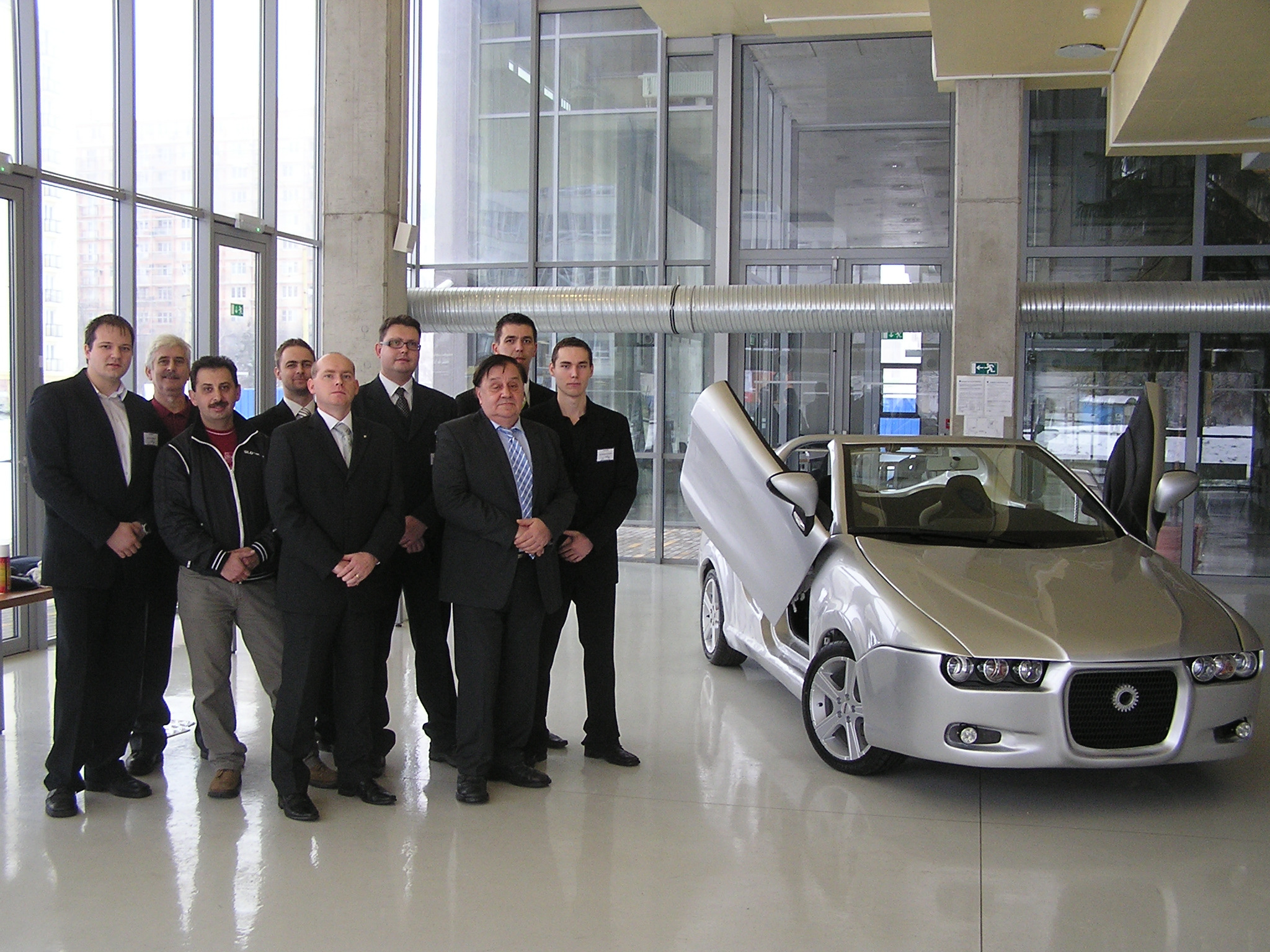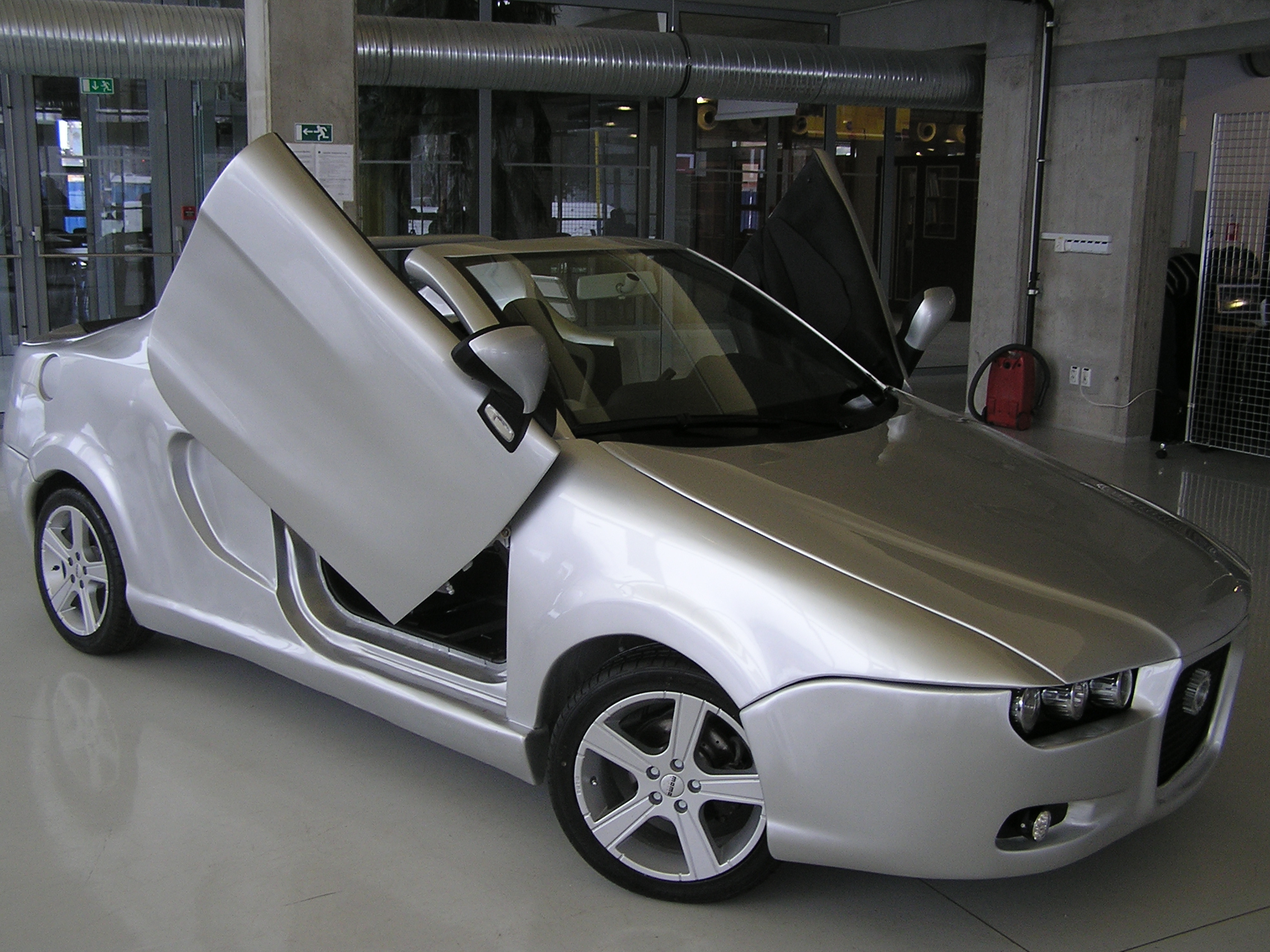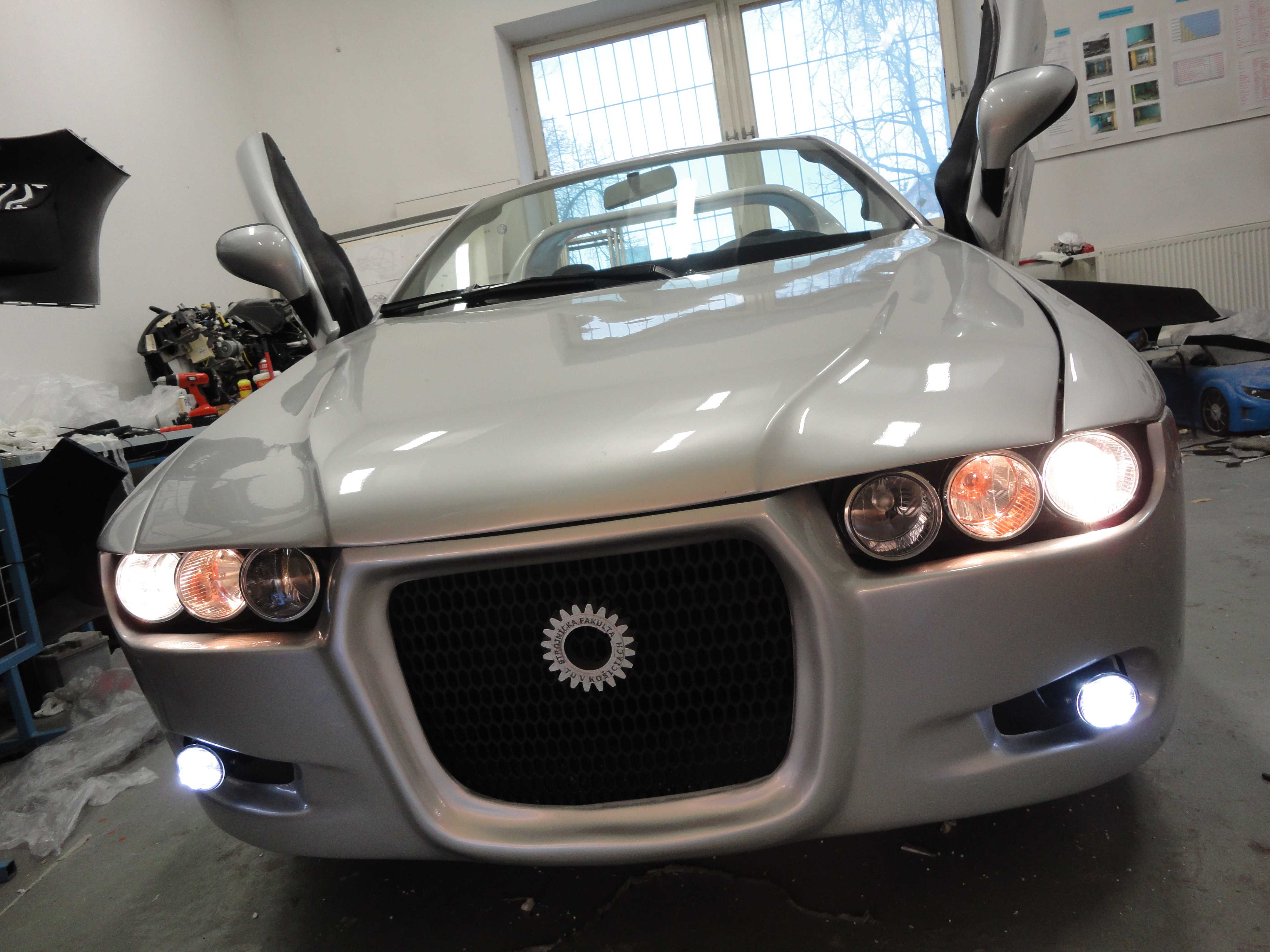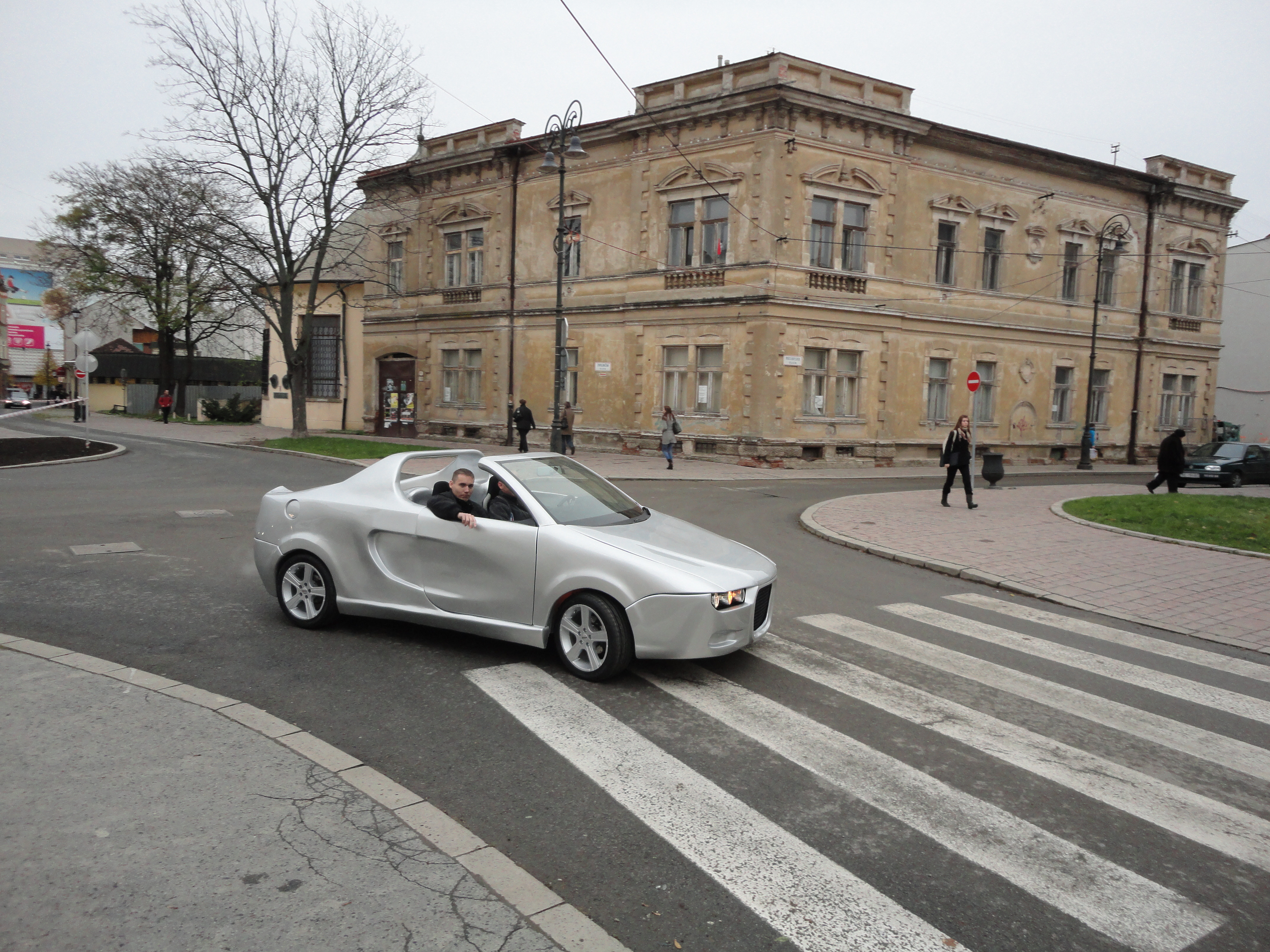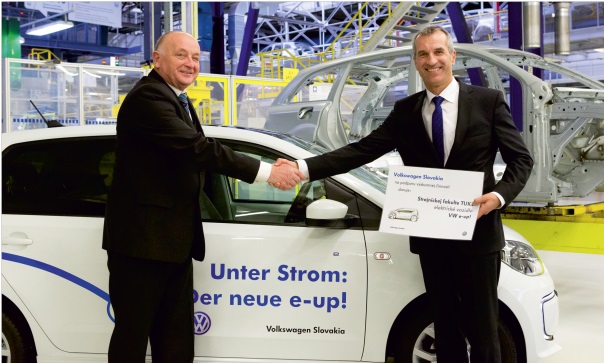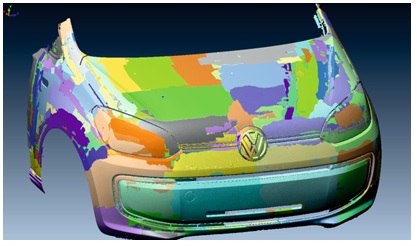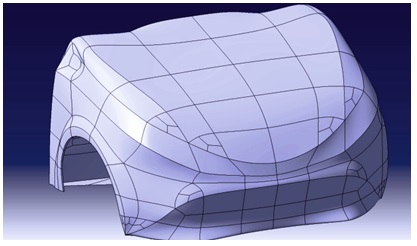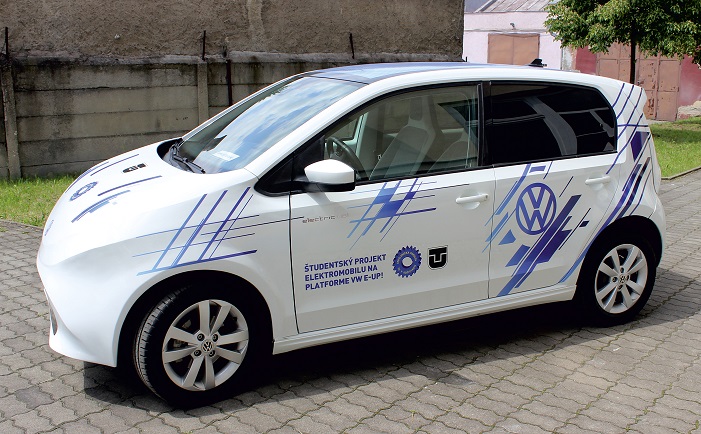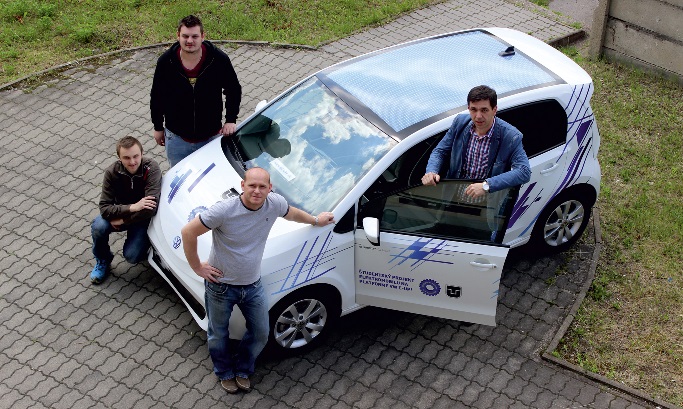

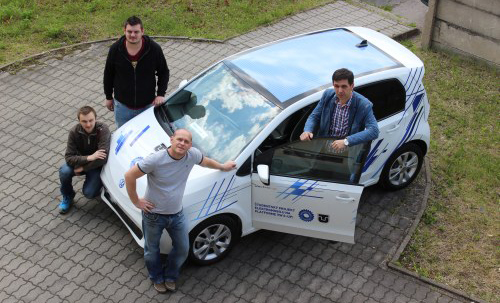
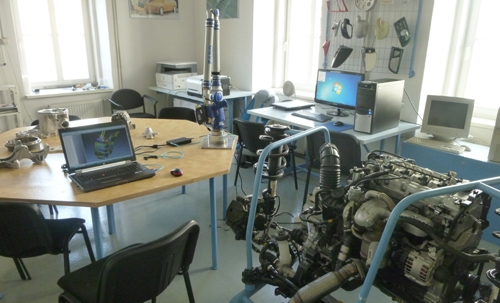
|
The aim of the project was to design and build a fully functional, life-size car that would represent the Faculty of Mechanical Engineering and students of automotive production in their acquired skills, knowledge and abilities. The car was designed to impress with its originality, aggressiveness, speed, modern innovative features and sporty appearance, appealing especially to the younger generation as well as to sporty motorists. The project was built to model the real process of automotive companies, with real constraints and with the didactic intention of maximum team creativity based on the learnig by doing method. The project had no grant, the funding was provided by the Dean of the Faculty of Mechanical Engineering, Dr.hc. Prof. Ing. Miroslav Badida, PhD. from the laboratory building fund. The expert guarantor of the project was prof. Ing. Milan Kováč, DrSc. - Director of the Institute of Technology and Management and Head of the Innovation Centre of Automotive Production. Expert consultants:
They collaborated:
The sequence of project phases was as follows: Generation of conceptual variants of the car, design proposals, graphic and computer designs, evaluations, creation of models, technical solutions, calculations, experiments, decision-making production - subcontracting, ....
Portfolio of knowledge and implementation competence of our students
|
|
|
A project to develop a prototype of a lightweight student electric car body based on the Volkswagen e-up!
One of the main priorities in the development of the prototype lightweight body of the Volkswagen e-up! provided by Volkswagen Slovakia a. s. to the Faculty of Mechanical Engineering of TU Košice as a gift (Fig. 1) is to increase the range on the road:
In parallel with the above objectives, the attractiveness of the design is also expected to increase in order to appeal to the younger generation.
The project is divided into several phases. In the first phase, reverse engineering technologies were used. 3D laser scanning (Fig. 2) and surface modelling technologies were applied, resulting in the digitalisation of the body of the VW-eUp! The obtained car body model was used both as a basis for aerodynamic analyses in the simulation software and as a "matrix" for determining the boundaries of the individual car parts (hood, front fenders, tailgate and bumper). In the first phase of the project, the objective is to validate the proposed concept of increasing the aerodynamic efficiency and reducing the weight of the selected components. The newly designed components are connected to existing parts of the car body, using the boundary lines of the individual body parts obtained by scanning.
Innovative designs of selected parts were created using CAD modelling. The design of the selected body parts was optimized with the support of CATIA and ANSYS - Fig. 3.
Rapid prototyping technologies were used for the production of the upgraded body components. A positive mould was milled by CNC machining, which became the basis for the production of new composite parts using vacuum forming technology.
The design change is also aimed at improving the aerodynamic properties of the car, as already mentioned. The sharp lines of the front of the car are designed for fast airflow around the body. They directly follow the side lines of the original model, which stabilise the flow of the circulating air. The special shape of the rear wing encloses the flow lines just behind the rear doors of the car. The braking effect of the rushing air hitting the front of the car has been eliminated by the closed profile of the bumper face with its connection to the bonnet and mudguards.
In the next phases of the project, the installation of photovoltaic panels and further reduction of the car's weight are being considered, both by replacing the original components with components made of progressive materials and by an overall redesign aimed at reducing aerodynamic drag.
The modular principle makes it possible to continue working on the redesign of the doors and interior elements.
|
obr. 1
obr. 2
obr. 3
obr. 4
obr. 5 |
COOPERATION WITH PRACTICE
- Volkswagen Slovakia a.s.
- Johnson Controls Trenčín, s.r.o.
- GETRAG FORD Transmissions Slovakia, s.r.o. - Košice/Kechnec
- Faurecia Slovakia s.r.o. - Košice
- SWEP Slovakia - Košice/Kechnec
- GOHR, s.r.o. - Veľký Šariš
- Prvá zváračska a.s. Bratislava
- ÚM SAV v Košiciach
- Výskumný ústav dopravný, a.s. Žilina
- TEN Slovakia
INTERNATIONAL COOPERATION
- Faculty of Automotive and Construction Machinery Engineering
- Warsaw University of Technology
- Politechnika Świetokrzyska - Kielce
- CVUT Praha
- VUT Brno
- VŠB Ostrava
- TU v Liberci
- MECAS Plzeň
-
VEGA 2/0080/19 Prediction of weldability and formability of combined laser-welded high strength steels with support of CAE systems. Solved in collaboration with Slovak Academy of Science.
Duration of the project: od 01.01.2019 do 31.12.2022.
Responsible researcher from TUKE: prof.Ing. Emil Evin,CSc.Solved projects
- APVV -0273-12 Podpora inovácií komponentov karosérií z prístrihov oceľových plechov zameraných na bezpečnosť, ekológiu a znižovanie hmotnosti.
Duration of the project: od 01.10.1013 do 31.03.2017.
Responsible researcher: prof.Ing. Emil Evin,CSc. - VEGA 2/0113/16 Vplyv parametrov laserového zvárania na štruktúru a vlastnosti zvarových spojov moderných ocelí pre automobilový priemysel.
Duration of the project: od 01.01.1016 do 31.12.2018.
Responsible researcher: prof.Ing. Emil Evin,CSc.
- Horizon 2020 Investigation and development of a new generation of machines for the processing of composite and nanocomposite materials
Duration of the project: 01. 01. 2017 – 31. 12. 2020 (48 months)
Responsible researcher: prof.Ing. František Greškovič,CSc.
- VEGA 1/0824/12 Štúdium tribologických aspektov lisovateľnosti povrchovo-upravených plechov a prístrihov na mieru.
Duration of the project: od 1.1.1012 do 31.12.2015.
Responsible researcher: prof.Ing. Emil Evin,CSc.
- Návrh standu pre predikciu charakteristík bezpečnosti tenkostenných ultraľahkých komponentov automobilov.
Duration of the project: od 1.9.1015 do 31.05.2016,
Responsible researcher: prof.Ing. Emil Evin,CSc.
Projects supported by EU
- OPVaV-2o1o/2.2/o6-SORO.ITMS - 2622022015s; "Kompetenčné centrum znalostných technológií pre inovácie produkčných systémov v priemysle a službách";EU - OP Výskum a vývoj 2620002; Suma získaných finančných prostriedkov: 6 081 o6o,o6Eur; Rok schválenia projektu: 2010; vedúci aktivity projektu za SjF: prof. Ing. Milan Kováč, DrSc., Duration of the project: 01.09.2011-31.12.2014
- 7RP PEOPLE-2010-IRSES/269177 - Technological and design aspects of extrusion and injection moulding of thermoplastic polymer composites and nanocomposites. Responsible researcher: prof. Ing. František Greškovič, CSc., Duration of the project: 01.04.2011-01.04.2015
